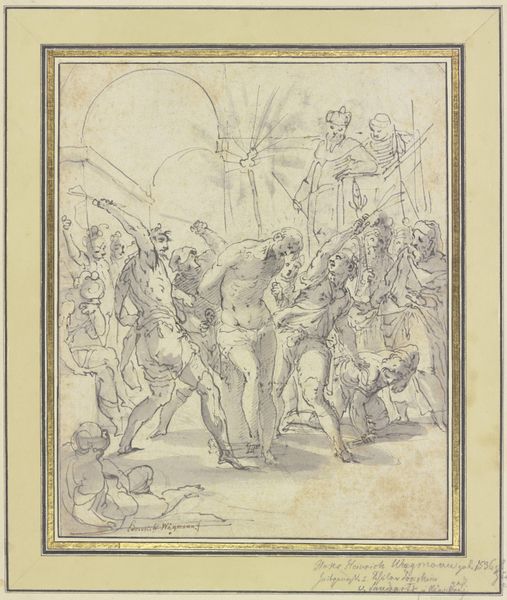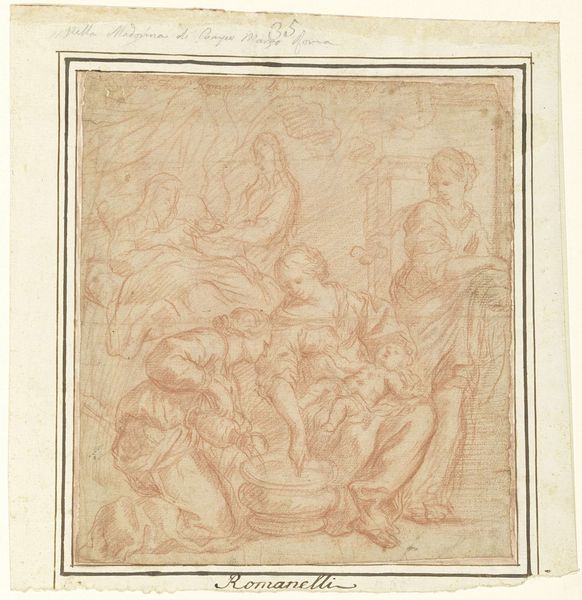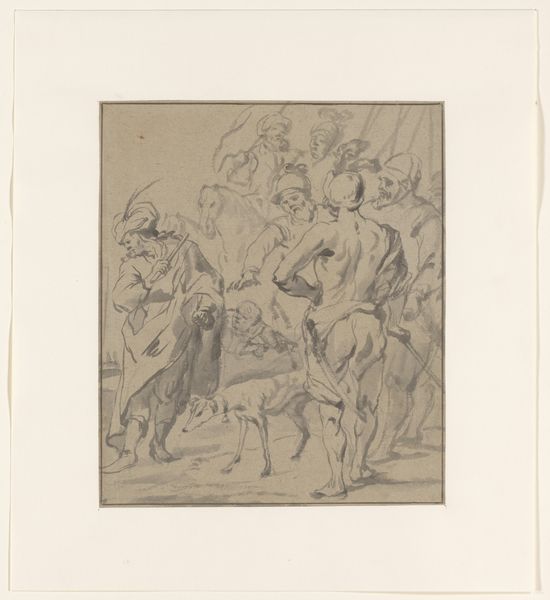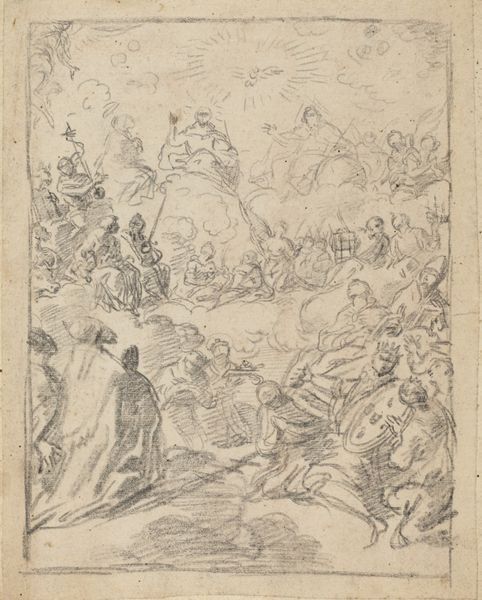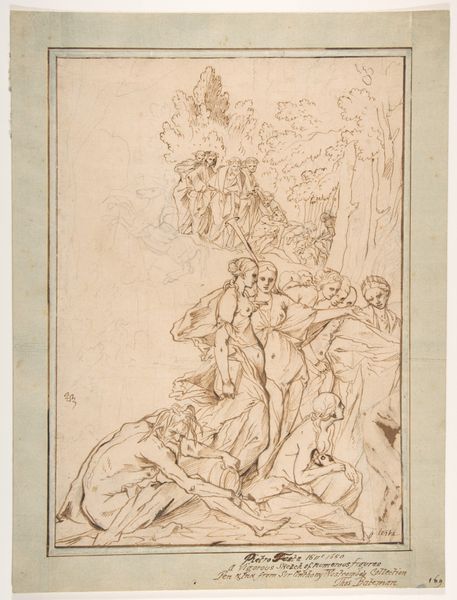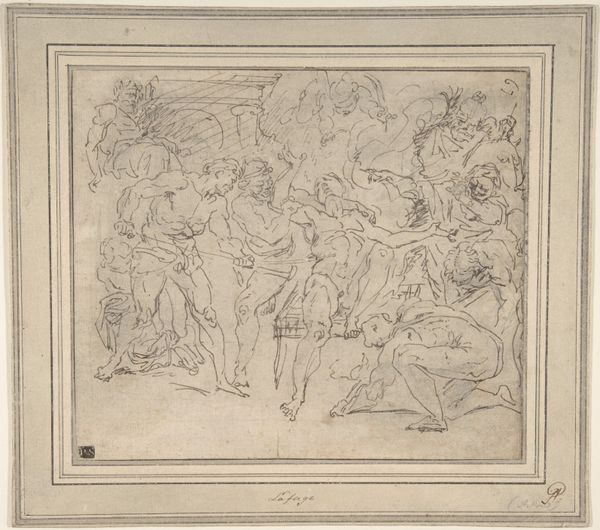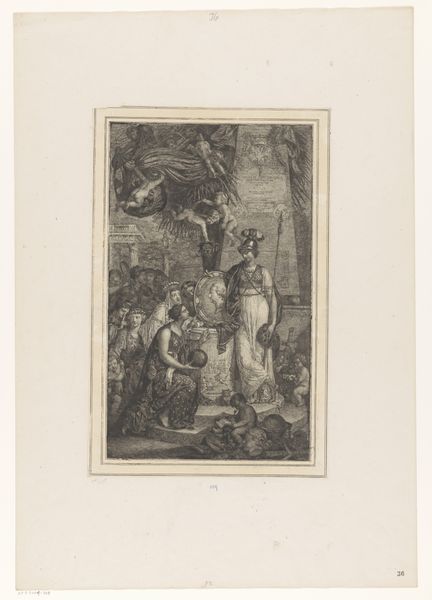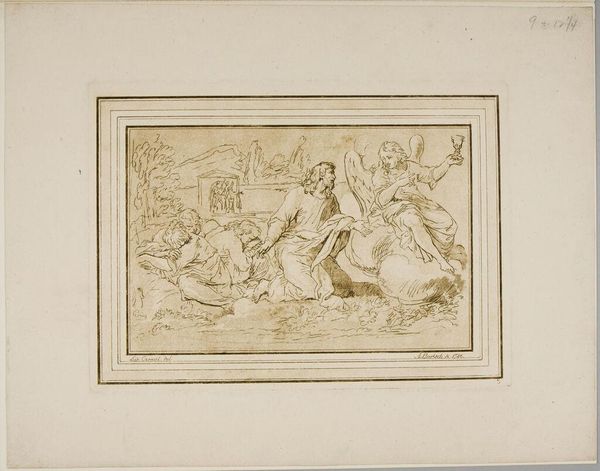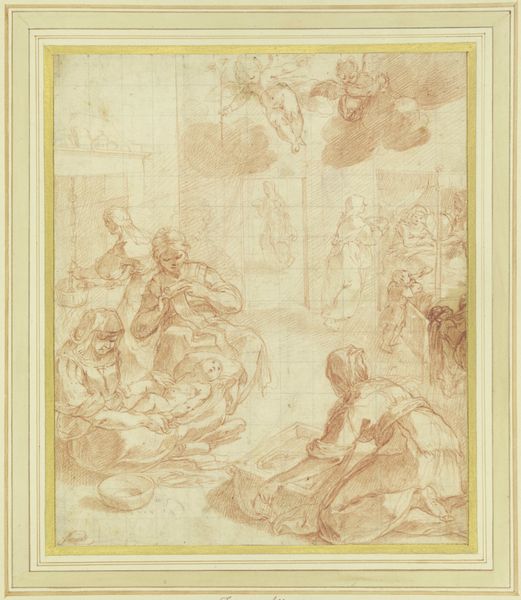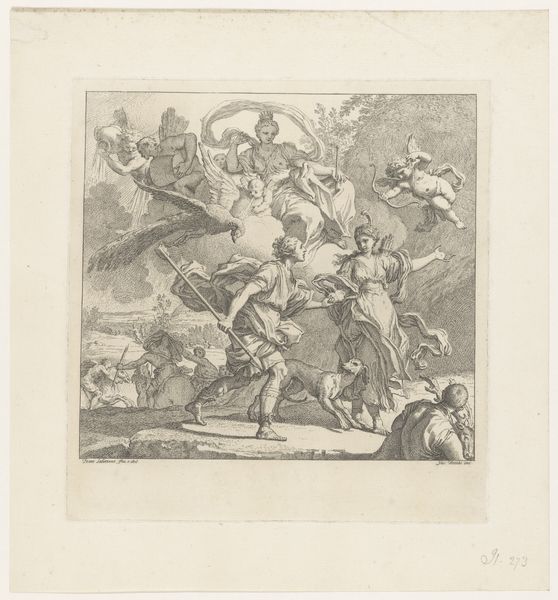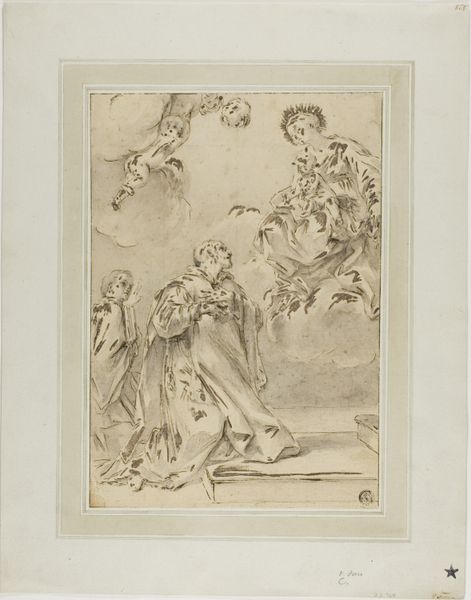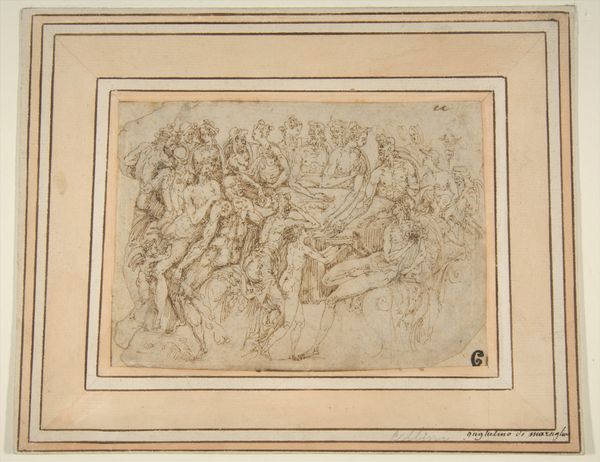
Figure Studies for a Judgment Scene 1660 - 1700
0:00
0:00
drawing, print, etching, ink
#
drawing
#
ink painting
# print
#
etching
#
etching
#
figuration
#
11_renaissance
#
ink
#
history-painting
Dimensions: 9 5/8 x 7 5/16 in. (24.4 x 18.5 cm)
Copyright: Public Domain
Curator: At first glance, the composition is intensely active, teeming with figures seemingly suspended in mid-gesture. Editor: Absolutely, it feels quite gestural, doesn't it? This work is attributed to Michel Corneille the Younger, "Figure Studies for a Judgment Scene," created between 1660 and 1700. It's rendered in ink, utilizing both etching and print techniques. What captures you most about the raw material and labor that was involved here? Curator: The medium itself—ink on what appears to be laid paper—establishes a framework for decoding. The stark contrast allows for the clear delineation of forms. Note the artist’s use of hatching to build tonal depth, creating a spatial dynamic within the two-dimensional plane. Editor: Precisely! Thinking about the period, you have an etching that allows for reproducibility, but the underlying ink sketches denote manual work that is unrepeatable. These decisions involved specialized labor, like paper-making. I keep thinking about the value ascribed to printed works versus a unique sketch, and how economic and social value is inextricably bound to these production methods. Curator: A fascinating point. We can consider the formal qualities, such as the rhythmic arrangement of figures, leading the eye towards a central, elevated group. This strategic placement evokes a sense of hierarchy and drama. The architecture faintly sketched in the background adds to the visual schema and reinforces an air of theatricality. Editor: It certainly evokes a stage setting. The etching would allow for multiple viewers to engage with his design, but someone would have had to carefully transfer his design onto a plate. Each impression, a social object shaped by human and non-human actants. And each mark, an index of its making. I'm curious about its historical reception, whether it resonated because of its reproducibility or because it amplified the original idea. Curator: A worthy consideration. Ultimately, the beauty here lies in its complex orchestration of form and meaning, where we appreciate it by recognizing that his art evokes a particular cultural milieu. Editor: True. The distribution networks were just as significant. Pondering the hands that brought this image to others adds to our understanding of this complex composition.
Comments
No comments
Be the first to comment and join the conversation on the ultimate creative platform.

